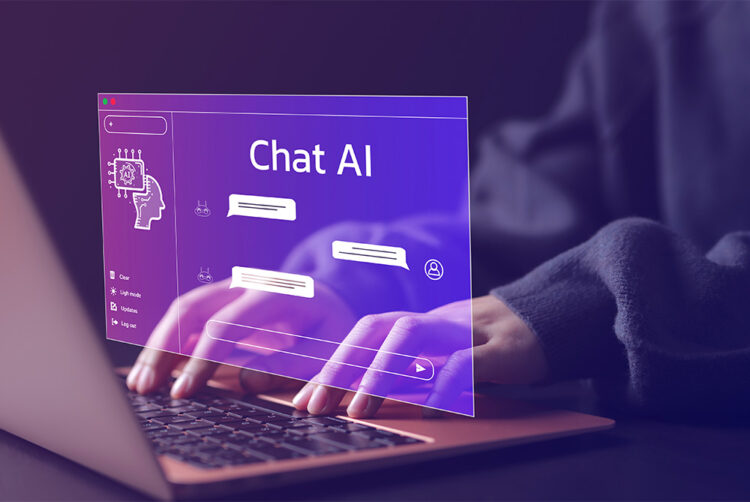Why AI is ‘drastically improving’ the effectiveness of media planning

With the explosion of generative artificial intelligence chat programs like ChatGPT and the improving sophistication of the technology, media owners and ad solution providers are grappling with ways to best harness the technology.
A slew of AI-driven ad solutions made a splash at the IAB Upfronts in New York last week, with Snap, Roku and Meta all showcasing AI ad tools.
Marketers themselves seem ready to embrace the technology. A survey conducted by Sitecore — an end-to-end digital experience software provider — shows that 72% of UK marketers will prioritse spending on AI and 67% said they would dedicate almost a third of their marketing budget towards the technology. The survey found that 63% have already experimented with the technology.
Despite the enthusiasm for generative AI among marketers, the survey also highlights an uncertainty marketers feel about their technical capacity to use the technology. Nearly half (45%) of respondents said they do not feel their marketing technology is currently equipped to leverage generative AI.
AI is already influencing media planning and research
Some agencies have already began leveraging AI-driven tech in their media research and planning. One example is WPP agency Wavemaker, which rolled out its AI-powered planning tool Maximise in 2021.
Sarah Salter, global head of applied innovation at Wavemaker, spoke to The Media Leader about the effectiveness of AI-powered planning. She said: “AI has drastically improved the effectiveness of Wavemaker’s media planning, through Maximize we can quickly and accurately build base line plans.”
“The speed at which we can now do this allows us to be more reactive to real world trends and plan away from the average as well as add more transformation growth ideas into more of our plans.”
The agency is also leveraging generative AI and has built several proof of concepts which Salter says show great promise. She believes the impact of generative AI on the whole industry will be significant and wide reaching: “As with any revolutionary technology AI will change the landscape of business and consumer’s relationship with technology.
“We believe AI can be a huge driver of creativity in the way that it can surface recommendations, insight and understanding to anyone around the world.”
Another agency experimenting with integrating generative AI into its research and planning is Havas Media Group. Hamid Habib, chief experience officer at Havas Media Group and deputy managing director at Havas Entertainment, told The Media Leader that the agency’s digital team are already using it for copy suggestions and reporting. “We’re seeing how it can better articulate or summarise aspects of a campaign, especially the aspects that move really quickly,” Habib said.
According to Habib, the agency is also trialing the technology to check the accuracy of content ideas and for SEO code creating. Havas’ social media team has been generative AI for audience insights too.
Habib emphasised how Chat GPT had not only quickened the process of research, but also had reported accurate information contained in user-restricted archives (such as academic databases) which would have otherwise been inaccessible.
He said: “Its transformative for planners and strategists and a raft of people in the media industry.”
While Havas and other agencies have already integrated machine learning into their analytics capabilities, Habib believes that the emergent AI tech will accelerate the speed at which they become more sophisticated.
One big change he thinks will occur as a result of generative AI being used in media planning and research, is that marketers who are just starting out in the industry will suddenly have a wealth of insight about consumer trends at their fingertips. He said: “If you’re a small direct-to-consumer business and you’re making the next leap into broadcast advertising, this is going to make things much more accessible.”
Salter made a similar point, emphasising the creativity the technology has the potential to inspire: “Everyone can quickly educate themselves in areas they know little about leading to an explosion of ideas by combining ideas and practises from one industry to another.”
AI and creatives
In recent months speculation about how generative AI will impact creatives had grown, with Google revealing that it is planning to offer a generative AI ad solution to produce creatives for campaigns.
Oliver Saunders, global head of addressability at Wavemaker, told The Media Leader that the technology can play a major role in asset production. He said: “Deployed well in creative assets, AI capabilities represent just another arrow in the quiver of the artist, which can impact the asset in whichever way the human mind can dream it.”
Saunders said Wavemaker’s strategy workshops have been “revolutionised” by the ability to produce a rich content matrix merely by typing in a brand name. The output of the technology considers brand-relevant audiences and occasions on which they may be addressed.
He remarked: “We can instantly provide clients with copy/call-to-action suggestions, synthetic voiceover content, novel imagery, and prompt copy, all from a single click of the ‘imagine’ button.
“It used to take weeks for a specialist to arrive at that matrix-planned output after which rounds of amends take place, but now we get there within the day.”
According to Saunders, this increased procedural efficiency allows Wavemaker’s teams more time to focus on the big transformative ideas.




